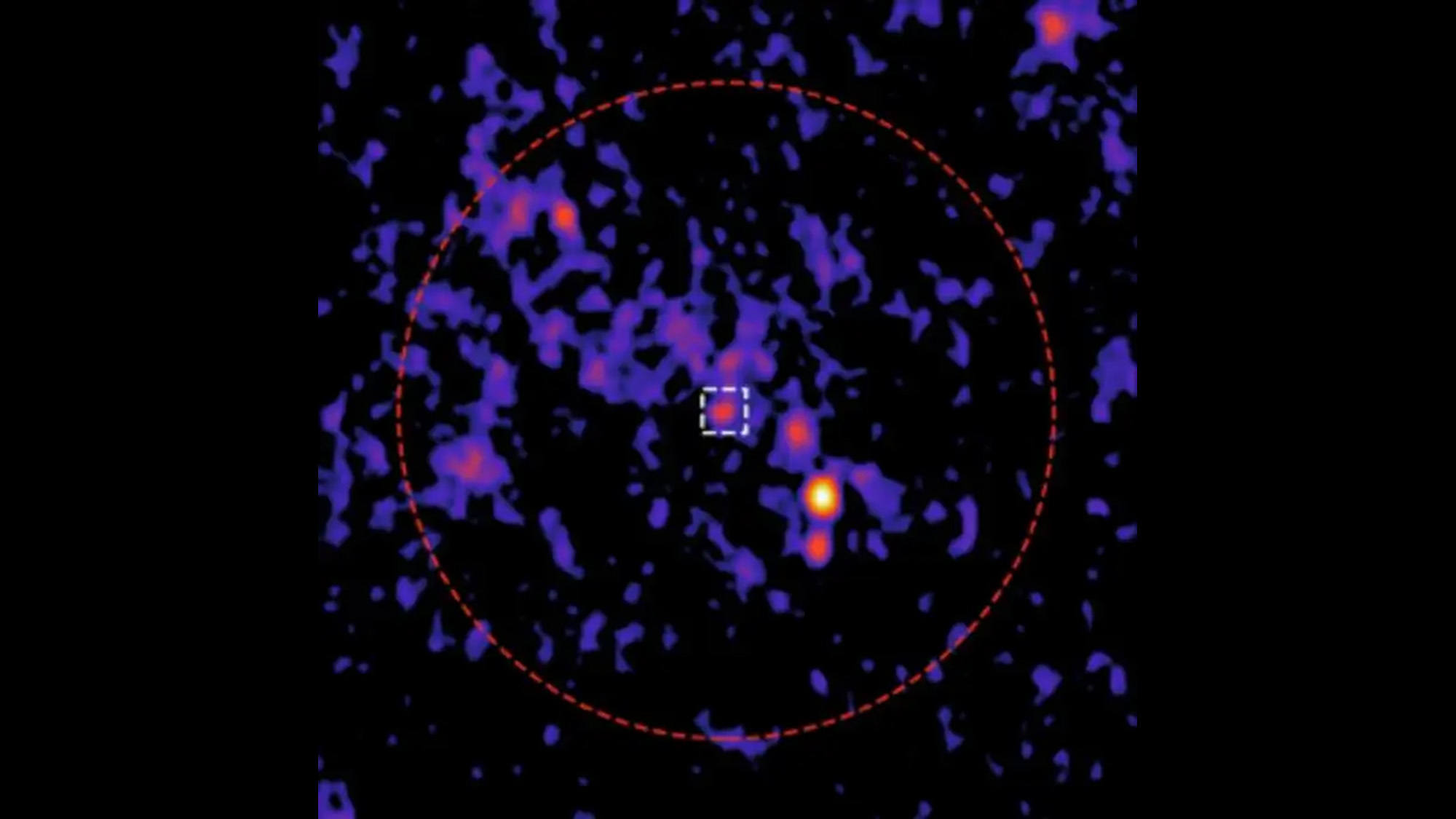

An international team of astronomers have created the most sensitive radio image ever of a globular cluster. The team imaged 47 Tucanae, an ancient ball of tightly-packed stars and is the second brightest globular cluster in the night sky. The team also documented a previously undetected radio signal emitting from 47 Tucanae’s center. The research was published January 16 in The Astrophysical Journal.
[Related: This glittery Hubble image shows how far we’ve come in studying distant stars.]
Globular clusters are an ancient relic of the Early Universe. During this period of time just after the Big Bang, the universe was a “hot soup of particles” or protons, neutrons, and electrons. When the universe began to cool down, the protons and neutrons began to combine into ionized atoms of hydrogen. Globular clusters allow today’s astronomers to learn more about this foundational period of the universe. They are very dense, and have thousands to millions of stars packed together in a sphere shape. 47 Tucanae can be seen without a telescope and was first cataloged in 1751.
Like light, radio waves coming from planets, stars, and globular clusters with changing magnetic fields travel through space. Radio telescopes can then intercept these signals. Astronomers can then convert the waves into pictures and create radio images. Using data collected by radio telescopes, scientists can learn about the objects’ structure, composition, and even motion. Radio telescopes have to be physically larger than optical telescopes that gather and magnify the data, according to NASA.
“Our image is of 47 Tucanae, one of the most massive globular clusters in the galaxy. It has over a million stars and a very bright, very dense core,” study co-author and astronomer Arash Bahramian said in a statement. Bahramian is affiliated with the International Centre for Radio Astronomy Research and Curtin University in Australia.
This new ultra-sensitive image was created from over 450 hours of observations on CSIRO’s Australia Telescope Compact Array. The telescope is located in Gomeroi Country, one of the largest Indigenous nations in Australia. According to the team, this is the deepest, most sensitive radio image ever compiled by any Australian radio telescope.
While 47 Tucanae can be seen with the naked eye, detailed imaging allows the team to discover a very faint and previously undiscovered radio signal at the center of the cluster. According to study co-author and astronomer Alessandro Paduano, the detection was an exciting discovery that could be attributed to one of two possibiliites.

“The first is that 47 Tucanae could contain a black hole with a mass somewhere between the supermassive black holes found in the centers of galaxies and the stellar black holes created by collapsed stars,” Paduano said in a statement. While intermediate-mass black holes are thought to exist in globular clusters, there hasn’t been a clear detection of one yet.” Paduano is also affiliated with the International Centre for Radio Astronomy Research and Curtin University in Australia
If the second signal is a black hole, the discovery could mark the first ever radio detection of one inside a cluster like this.
[Related: An enormous radio telescope may soon be a powerful tool for planetary defense.]
The second possible source of the signal is a pulsar, a type of rotating neutron star that emits radio waves.
“A pulsar this close to a cluster center is also a scientifically interesting discovery, as it could be used to search for a central black hole that is yet to be detected,” said Paduano.
According to the team, this ultra-sensitive image is an example of what could be coming down the road from the SKA radio telescopes, currently being built in Australia and South Africa. They will be the two largest radio telescope arrays in the world once fully constructed and could help tackle some of the most fundamental questions about the universe.
“We managed to achieve close to SKA-quality science with the current generation of radio telescopes, combining hundreds of hours of observations to reveal the faintest details,” said Bahramian. “It gives us a glimpse of the exciting capabilities the next generation of radio telescopes will achieve when they come online.”
